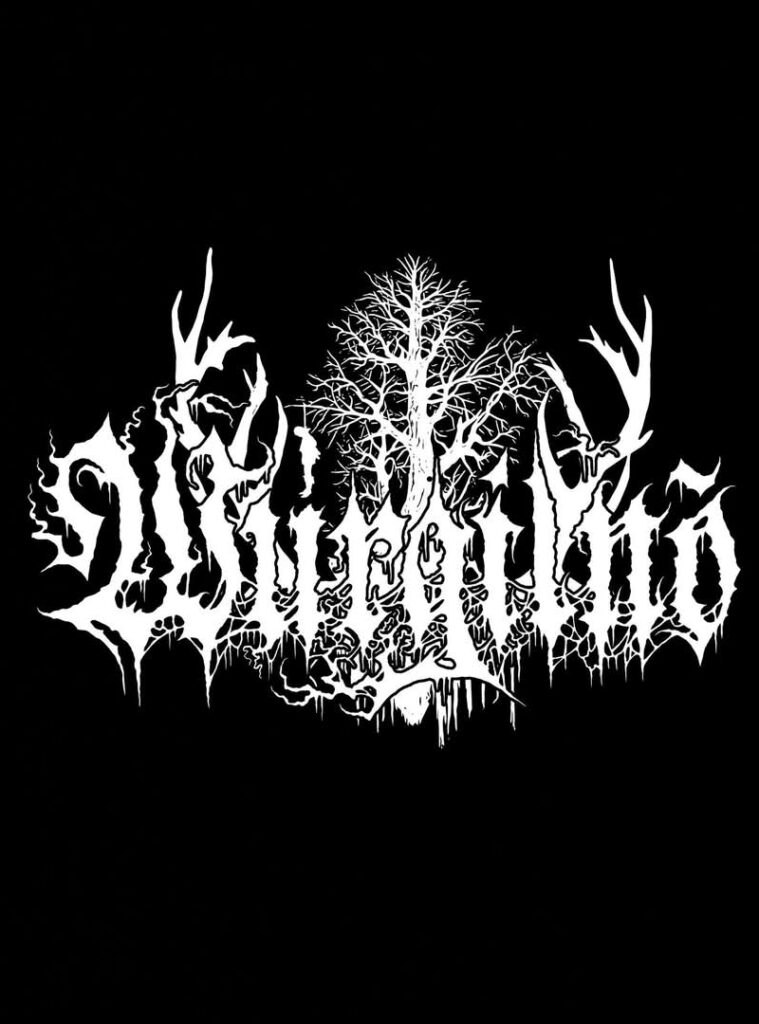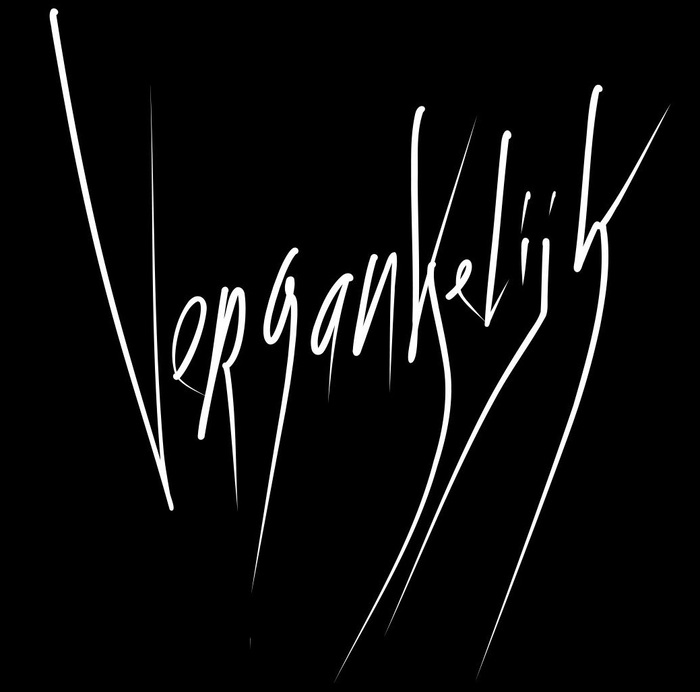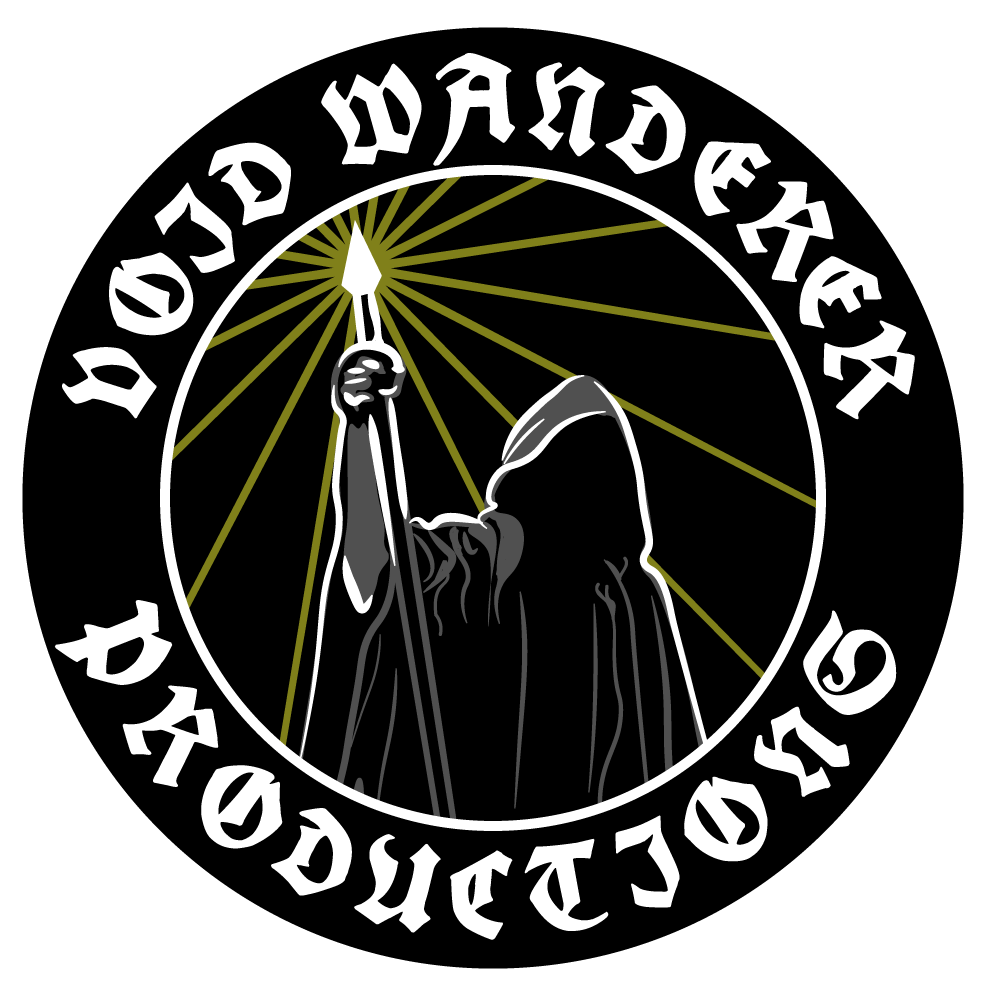
1. You’ve been active for quite a few years, and your musical journey dates back to the early ’90s. Many people know you primarily from Wurgilnõ and Vergankelijk, but you have much more in your history, such as Inverted Pentagram. Can you tell us about your musical career and how it has developed over the years?
My musical journey began, like many guys in the regio of Limburg (South of the Netherlands) at the time, at a young age with a brass band. At one point, we had three generations playing in the same band: my grandfather on horn, my father on bass, and myself on tuba. After my grandfather passed away, we stopped, and in 1989, I switched
to bass guitar. In the summer of 1990, the predecessor of Belphegor was formed, which was renamed Inverted Pentagram in 1992. In 1991 we started Corpusculum as a side project with some members of Belphegor. In 1996, I decided to stop with Inverted Pentagram because things weren’t running smoothly anymore, and there was too little progress.
In 2000, I was asked to collaborate on A Challenge of Honour: a project that combined industrial with folk influences. I worked on that until 2012, with my last performance being at Summer Darkness in Tivoli, Utrecht. After that, I started writing music again for Corpusculum, and since then, I have focused entirely on black metal. This resulted in
several demos and, eventually, a full album at the end of that year.
During the 2020 lockdowns, I decided to start a Dutch-language project called Mergelland, with the main theme being Limburgian legends and myths. This project evolved into Wurgilnō in 2022.
2. You’ve witnessed the rise of black metal up close. How do you look back on the early days compared to the scene today? What, in your opinion, has changed—both positively and negatively? And what is, for you, the essence of ’90s black metal, and is that essence still attainable today?
My first encounter with black metal was in 1986 when I saw the Seven Dates of Hell concert by Venom on Sky Channel. It made a huge impression on me at the time. Through VARA’s Vuurwerk and magazines like Aardschok, I quickly discovered a whole new world, with bands like Bathory and Celtic Frost—still my favorite bands.
When I bought my first guitar in 1989, I didn’t initially know how to approach it. That changed when I ordered the Medieval Prophecies EP by Samael. That record made me realize that music didn’t have to be complicated to sound powerful. From then on, that became my guideline: it has to sound heavy to my ears—the rest doesn’t matter much.
When the second wave really started breaking through in 1990, with a flood of new music coming through tape trading and demo exchanges, you could feel that something special was happening. We were entering a new era. Especially the demos from Enslaved, Emperor, Rotting Christ, and Necromantia made a big impact on me. The first album that truly grabbed me by the throat was A Blaze in the Northern Sky by Darkthrone. That album felt like a sign: our time had come!
The biggest difference with the past, I think, is that the ‘romance of discovery’ is gone. Back then, tape trading and writing and exchanging with people all over the world were essential parts of the scene. I would receive packages and letters from all corners of the world every day – sometimes people would even come to the door to collect stamps. Nowadays, you just open Spotify or Bandcamp, and the algorithm tells you what you might like. Contact with bands happens via chat or email, and it’s a matter of seconds instead of waiting weeks for a letter with a trade list. Sometimes, I miss that era. Personally, I’ve always been purely focused on the sound – either I think something sounds heavy, or I don’t. Occasionally, I change my mind about a band. Mayhem or Burzum, for example, never really interested me – too much drama and theatrics, and I still don’t connect with that.
What strikes me is that many bands today are going back to the ’90s sound. That’s fine by me because that style is closest to my heart. But at the same time, it means that, with a few exceptions, there’s not much progression in the genre.
3. You’re a multi-instrumentalist and do everything yourself: guitar, bass, keyboards, vocals, and drum programming. How did that come about? And how do you experience working on studio albums alone compared to playing in a full band?
It’s mainly due to a lack of fellow musicians- the black metal scene here in the region is practically non-existent. Additionally, my full-time job makes it hard to keep regular days or weekends free for rehearsals.
During the years I played with A Challenge of Honour, I taught myself how to make music on my own. I now apply that knowledge to my current material.
The biggest advantage is that, as soon as I have an idea, I can immediately go into my small studio to turn it into music. The biggest downsides are the lack of social interaction, writing songs together, and exchanging ideas. As a solo artist, you often miss the constructive criticism you need to stay challenged. Fortunately, I have a network of
people around me who can provide that feedback.
4. Do you record all your music yourself? Do you also handle mixing and mastering, or do you work with others? How does that process look?

Yes, except for one track by Wurgilnõ, where Suffering Souls from Germany played a part.
I mix everything myself, but I leave the mastering to someone with more expertise. The Krijtland album was mastered in Sweden, and Vergankelijk – thanks to your tip – was mastered by the very talented Devi Hisgen, who will also handle the mastering for the next Wurgilnõ album.
I usually start by setting the tempo of a track. Then I write a guitar riff and come up with a second guitar part. Next, I experiment with the drums and come up with a bassline. This is how the song slowly grows. Once the rough sketch is done, I fine-tune and “embellish” it, after which I write and record the vocals. Then, I mix everything until I’m satisfied and
send it for mastering. This process differs from track to track – some are finished in a few days, while others take weeks to ferment.
5. What has Wurgilnõ released so far, and what does the name Wurgilnõ mean?
Wurgilnō has two albums, an EP, and a South American release where the debut and EP were combined. Originally, the first CD, De Doden Rusten Niet in Vrede, was intended as a demo tape, but Fetzner Death Records wanted to release it as a CD – and who am I to say ‘No’ to that?
The name Wurgilnō is an Old Saxon word that means “body on a gallows.” This is based on a family story about one of my ancestors, who was sentenced as a Bokkenrijder (a notorious bandit) and hanged, with his body left hanging until it fell down by itself. In black metal, it doesn’t get much more grim than that.
6. The music of Wurgilnõ heavily draws from the first and, to a slightly lesser extent, second waves of black metal. What attracts you to that raw sound? And which bands or artists have inspired you the most?
That raw, often simple sound has always appealed to me. I’m not a fan of solos or fiddling around— the rougher, the better. If something sounds heavy, there’s nothing left to improve. The gritty, unpolished sound of bands like Hellhammer, Bathory, and Sarcofago has always affected me more than the polished albums that came later. That’s still the case. Take, for example, the first four albums by Amenra—I think they’re amazing. You can hear the crackling, the noise, and even the mistakes, and that’s what makes an album feel organic.
As for inspiration, I would mention Bathory, Celtic Frost, early Samael, and Sarcofago, but also bands like Beherit and the old Greek scene have had a huge influence on me.
7. How does your music come about? Do you start with a specific feeling or idea?
With Wurgilnõ, I always put together a list of local myths, legends, or historical events from the Limburg region in Belgium and the Netherlands. I then do extensive research into these topics, which forms the basis for my lyrics. Part of it is based on that research, but I also add my own fictional elements.
Musically, it usually starts with a riff, a feeling, or an emotion. From there, I build and try to keep the music as exciting and varied as possible. I’m someone who loves repetitive riffs that go on for a long time, but I have to remind myself not to make them last too long.
8. You choose to write your lyrics in Dutch. Why that choice? And do your lyrics have a specific Dutch or even Limburgian theme?
I actually did everything in English for thirty years, but I discovered that I express myself better in my native language. Plus, we’ve been listening to a lot of Norwegian music since the ’90s, and that was never a problem. Many of my favorite Dutch bands sing in Dutch, and for foreign fans, it has the same exotic appeal as Norwegian, French, or Spanish does for us.
The theme of Wurgilnõ is primarily focused on Belgian and Dutch region of Limburg. This region has a very rich history, and as a history nerd, I found it fascinating to delve into it. There’s more to Limburg than marl and Bokkenrijders!
9. Your latest project, Vergankelijk, with Joris from Nether on vocals, recently released an EP. This project has a very specific theme. Can you tell us more about that? How did you and Joris come together, and how does Vergankelijk differ musically from Wurgilnõ?
Joris and I met at the Samhain Festival, where he and his wife were sitting at a table eating while Benjamin (Saturni Records) and I were looking for a seat. We started talking, and there was an immediate click. After a while, I asked him if he would like to record some lyrics for Vergankelijk. Since he is also a doctor and the theme fit within his professional field, it seemed like a fitting choice. He enjoyed it so much that he ended up wanting to do the entire album—and so we became a duo.
The theme of Vergankelijk is a trilogy about the transience of the human body, divided into three chapters: De Geest (The Spirit), Het Lichaam (The Body), and De Ziel (The Soul). We are currently finishing De Geest, which is primarily about Alzheimer’s and dementia. Before the album, Saturni Records will release two tracks as an 8” EP in early May.

Musically, Vergankelijk is less black metal and leans more towards doom/sludge, with a hint of black metal here and there. It’s all about the feeling, not about sticking to a specific genre—the lyrics of Joris are intense enough.
10. What stands out about Vergankelijk is the prominent and beautifully crafted basslines. Are there certain bassists who inspire you, or does that just come naturally in your playing?
I’ve always found Peter Hook of Joy Division/New Order to be a very influential bassist. Although he mainly plays a Bass VI – a cross between a guitar and a bass – that’s an instrument that’s still on my wishlist. For me, a bass doesn’t necessarily have to be a background instrument; it can take the foreground. Something that the guys from Necromantia understood very well.
11. You also run Merg & Been Records. What does the label specialize in? What kinds of bands do you release? And how is it to run a label in an era of streaming and an overabundance of monthly releases?
Merg & Been grew out of Tenebrae Sumus Records, where I used to release tapes for various international and national acts. For example, I’ve done releases for Salqui, Sacred Son, Apothecary, and Satanic Death. Since Merg & Been, I’ve mainly used it for my own music and focus solely on tapes. The next release will be the Galghe (black metal) tape, followed by Broken Ground (sludge/doom), which looks like a tape but is actually a USB drive.
The market is saturated; nowadays, you have to rely on your loyal followers. That’s why I always work in small editions. Streaming is an inevitable, dark force, but fortunately, the metal scene is still a scene that values physical releases.

12. Merg & Been seems to have become more than just a label; it’s turned into a media platform. Can you tell us more about that?
I’ve been writing for the Portuguese online magazine Blessed Altar for a while now, though it’s only twice a month. Since I really enjoy this activity and discover a lot of new music this way, I decided to add a magazine to the Merg & Been website.
I’ve been working on it for almost a month now, and I’ve already written several interviews and reviews. It’s still new, and the site needs to be filled further. Over time, it won’t be daily anymore because it takes quite a bit of time to do on my own. If anyone is interested in contributing, they can always reach out.
13. You operate deep in the south of the Netherlands. Is there even a black metal scene there? And since you’re so close to Belgium and Germany, do you have many connections with the Dutch scene and bands across the border?
I mainly have connections within the Dutch and Belgian scene. The German scene feels a bit less accessible, even though my German is quite good because I live only a few kilometers from the border. There isn’t really a black metal scene anymore; there are still a few bands here and there, but it’s not what it used to be. However, that doesn’t matter,
and thanks to technology, it’s no longer a major problem in 2025.
Interview: Floris
